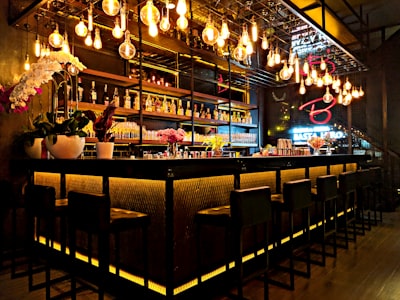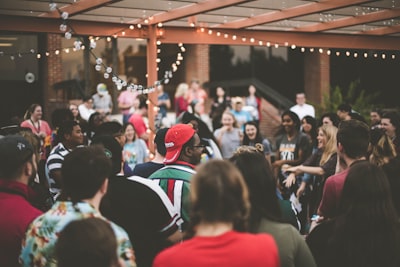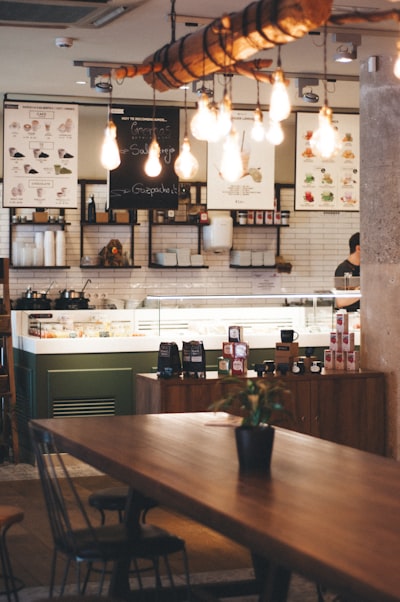Key Highlights
- Sociologist Ray Oldenburg introduced the idea of “third places” as crucial social environments outside of home and work.
- These spots, like coffee shops and parks, are the "great good place" for community building and social interaction.
- Third places are neutral, comfortable, and accessible, fostering a sense of belonging among regulars.
- They serve as anchors for community life, encouraging conversation, civic engagement, and playfulness.
- The decline of these spaces can lead to social isolation and negative public health consequences.
Introduction
Have you ever had a favorite spot outside of your home or office where you just love to hang out? Sociologist Ray Oldenburg has a name for these special locations: “third places.” Your home is your “first place,” and work is your “second place.” These third places, however, are the extra spots that become anchors of community life. They are what Oldenburg calls the "great good place," essential for fostering creative interactions and a sense of belonging in our society.
Understanding “Third Places” and Their Role in Communities
The term "third places," coined by sociologist Ray Oldenburg, describes the social surroundings separate from our usual environments of home and work. These are the anchors of community life, the "great good place" where we can relax in public, see familiar faces, and meet new people.
While we often think of coffee shops or bars, the world of third places is much broader. Understanding what defines these spaces helps us recognize their value everywhere. Let's explore the core characteristics and some modern examples you might find in your own neighborhood.
Defining a Third Space: Characteristics and Concepts
So, what exactly makes a spot a "third place"? According to Oldenburg, there are several key characteristics of third places. First, they act as a neutral ground where you can come and go as you please. You don't need an invitation, and there are no social or economic barriers to entry.
This social environment is also comfortable and informal. It’s an unpretentious setting where everyone is on the same level, which helps you feel like you truly belong. The main activity is often conversation, with a lighthearted and playful mood where laughter is common.
Finally, these places are convenient and have a core group of regulars who help establish the friendly tone. This combination of features creates a welcoming space that encourages social connection and a strong sense of community.
Modern Examples of City Third Space in the United States
You can find a city third space almost anywhere you look in the United States. These vital public spaces are not just limited to classic examples like coffee shops or diners. They span a wide range of establishments, both commercial and public, that support community life.
From community centers to shopping malls, third places offer a setting for social interaction and stress relief away from home and work. They provide a feeling of inclusiveness without the formal rules of a private club.
Here are some common examples of third places you might encounter:
Category — Examples of Third Places
- Commercial — Coffee shops, bars, restaurants, barber shops, beauty salons, bookstores
- Public — Public libraries, parks, community centers, senior centers
- Non-Profit/Civic — Churches, synagogues, YMCAs/YWCAs, social clubs
Everyday Third Spaces Beyond Coffee Shops and Bars

When we think of third places, our minds often jump to caffeine or cocktails. However, many other everyday spots serve this important social function. Think about the places you visit regularly that are within walking distance of your home and offer a chance to chat and connect.
Hair salons and barber shops, for instance, have traditionally been community hubs. They are places where people from all walks of life gather, share stories, and catch up on local news. Similarly, a local book club that meets in a library or a tea house can provide that same sense of regular, informal connection.
Here are a few other examples of third places in everyday life:
- Local diners and bakeries
- Bowling alleys and arcades
- Neighborhood general stores
- Senior centers and YMCAs
Why Third Spaces Matter: Social Glue and Community Building
Third spaces are much more than just places to hang out; they are the social glue that holds neighborhoods together. They are essential for community building because they naturally foster social interaction and help strengthen our social networks.
By providing a relaxed and accessible environment, these locations encourage us to connect with people we might not otherwise meet, building a stronger sense of community. We'll now look at how this social interaction happens and how it contributes to a more engaged and connected society.
The Importance of Social Interaction in Connected Communities
Meaningful social interaction is the lifeblood of any thriving community. Third places are uniquely designed to foster these connections. In these settings, your social status doesn't matter. Everyone is on equal footing, which removes barriers and encourages open conversation.
This kind of environment is perfect for learning and practicing social skills. Whether you're debating with a friend, joking with a barista, or just listening to the chatter around you, you're participating in the community's social life. These simple interactions build trust and a shared sense of identity.
Ultimately, this regular, informal contact is what builds a true sense of community. When you have a place to gather and connect with your neighbors, you create a support system and a feeling of belonging that makes your neighborhood feel like home.
Building Civic Engagement Through a Third Space
Third spaces do more than just build friendships; they are also powerful engines for civic engagement. When people gather regularly, they start talking about what's happening in their neighborhood. These informal conversations can quickly turn into organized action.
Think about it: a discussion about a local park needing a cleanup can lead to the formation of a volunteer group. A chat at a coffee shop about a neighborhood issue might inspire residents to attend a town hall meeting. These places become natural organizing hubs for local groups.
By providing a platform for public discourse away from the formal settings of government agencies, third places empower residents to take an active role in community building. They are the grassroots of democracy, where people connect, share ideas, and work together to improve their shared environment.
Unique Third Spaces in American Culture
Throughout American culture, certain types of third places have played a unique historical role. For example, early European-style coffee houses in England were known as "penny universities." For the price of a coffee, anyone could enter and join lively intellectual and political debates, a concept that shaped early democratic ideals.
This spirit lives on in many modern third places. The friendly third place staff, from the barista who knows your order to the librarian who recommends a book, contributes significantly to the community quality of life. They are often the hosts who help make these spaces feel welcoming.
While many third places are universal, some have a distinct American flavor:
- Classic diners where people gather for coffee and conversation.
- Neighborhood bars featured in shows like Cheers, which became cultural symbols of community.
- Shopping malls, which for decades served as social hubs for teens and families.
- Barbershops and beauty salons, which are cornerstones of community life in many neighborhoods.
Cultivating Inclusivity in Third Spaces

For a third space to truly succeed, it must foster inclusivity and a sense of belonging. The best ones serve as a neutral ground where people from all walks of life feel welcome and comfortable. They are designed to bring people together, not keep them apart.
However, creating this environment doesn't just happen by accident. It requires intentional effort to ensure that everyone, regardless of their background, feels safe and accepted. Let's explore what makes a third space truly welcoming and the practices that help cultivate this feeling of belonging.
What Makes a Third Space Welcoming for Everyone
Creating a truly welcoming third space starts with a foundation of inclusivity. This means the space must be open and inviting to everyone. A key element is accessibility, both in a physical sense and a social one. There should be no barriers, financial or otherwise, that make someone feel they don't belong.
This welcoming atmosphere cultivates feelings of warmth and comfort. When a place is unpretentious and informal, it encourages patrons to relax and be themselves. This helps build a sense of ownership among the regulars, making them feel like the space is truly theirs.
Ultimately, a welcoming third space is one where everyone feels seen and valued. It’s a place where you can show up alone but never feel lonely, because you know you're part of a larger community that accepts you as you are.
Tools and Practices for Fostering Belonging
Fostering a sense of belonging requires more than just an open door; it involves active practices. The third place staff often play a crucial role. A friendly host or barista who greets people as they arrive can instantly make a space feel more personal and inviting.
Organizing events is another powerful tool. Activities like open mic nights, book club meetings, or community talks can bring people together around shared interests. These events provide a structured way for new acquaintances to form and for regulars to deepen their connections.
Here are some specific practices that help foster belonging:
- Training staff to be welcoming and to facilitate connections.
- Designing the physical layout to encourage mingling and conversation.
- Hosting regular, low-cost events open to the entire community.
- Maintaining a playful and light-hearted atmosphere where people feel comfortable.
Examples of Inclusive City Third Space Environments
Many city third space environments excel at being inclusive by design. Public libraries, for example, are pillars of inclusivity. They welcome everyone regardless of age or socioeconomic status and provide free access to information, technology, and a safe, quiet place to spend time.
Community centers and the local YMCA are other prime examples. These organizations are explicitly mission-driven to serve the community. They offer a wide range of programs and services, from fitness classes to after-school activities, that cater to diverse interests and needs.
These places often become vital hubs for a neighborhood. They are designed to be accessible and to serve the public good, making them naturally inclusive.
- Public Libraries: Offer free resources, events, and a safe space for all.
- Community Centers: Provide programs and support for various age groups and backgrounds.
- Non-profit cafes: Sometimes run with a mission to provide a welcoming space for marginalized groups.
Third Spaces and Health: Physical and Mental Wellbeing
The benefits of third places extend directly to our physical and mental wellbeing. By offering opportunities for social connection, they can be a powerful antidote to social isolation and loneliness, which are growing public health concerns.
These community hubs support our health in many ways, from encouraging physical activity to providing emotional support. We will explore how different types of third places, including gyms, contribute to our mental health and overall collective wellness.
Can Health Clubs or Gyms Be Considered Third Spaces?
Yes, health clubs and gyms absolutely can function as third places for many people. While their primary purpose is exercise, they often evolve into social hubs where members build strong social networks. People meet up for group classes, chat between workouts, or grab a smoothie together afterward.
For these places to truly become third places, they need to foster a sense of community beyond just fitness. This happens when the environment is welcoming, non-intimidating, and encourages social interaction. A gym with a friendly staff, a comfortable lounge area, and group activities is more likely to become a true community anchor.
When a gym successfully creates this atmosphere, it becomes more than just a place to work out. It becomes a space where people find support, motivation, and a sense of belonging, ticking all the boxes of a great good place.
Impact of Third Spaces on Mental Health
The link between third places and improved mental health is strong and clear. One of the biggest factors is their ability to combat social isolation. In a world where a sense of loneliness is on the rise, having a place to go for regular social connection can make a huge difference.
Simply being around other people in a comfortable, low-stress environment can boost your mood and reduce feelings of alienation. The casual conversations and shared laughter that happen in these spaces provide a much-needed sense of belonging and support.
For many, especially older adults or those living alone, a daily trip to a local coffee shop or community center is a lifeline. It provides a routine, a reason to get out of the house, and a connection to the wider world, all of which are crucial for maintaining good mental health.
How Community Spaces Support Collective Wellness
Community spaces are foundational to collective wellness. When a neighborhood has vibrant third places, the entire community benefits. These spaces encourage positive social interaction, which builds trust and social cohesion among residents.
This sense of connection can have far-reaching effects. Neighborhoods with strong social infrastructure often see lower crime rates and a greater willingness among residents to look out for one another. The disappearance of these spaces, on the other hand, can have serious public health consequences, leading to increased isolation and community fragmentation.
By providing a physical location for people to gather, share, and support each other, these spaces reinforce the idea that we are all in this together. They promote a culture of care and mutual respect, which is the bedrock of a healthy and resilient community.
Finding Your Own Third Space Locally

Feeling inspired to find your own great good place? The good news is that third places are all around you, woven into the built environment of your local community. Finding the right one is about knowing what to look for and being open to exploring the public spaces in your area.
The key is to think beyond your usual routine and start noticing the places where people naturally gather. Below are some tips to help you identify potential third places and discover new opportunities to connect right in your own neighborhood.
How to Identify and Access a Third Space in Your Area
Identifying potential third places in your area is easier than you might think. Start by looking for places that feel like neutral ground—spots where you don't need a formal invitation to enter and can simply exist without pressure to buy something or participate.
Consider places within walking distance of your home, as convenience is a key factor. A great social environment will have a mix of regulars and newcomers, and you'll likely hear the sound of conversation and laughter. Look for places with comfortable seating that encourages people to stay for a while.
Pay attention to the atmosphere. Does it feel welcoming? Is the staff friendly? A true third space should make you feel at home the moment you walk in. Trust your instincts—if a place feels good to be in, it probably is one.
Tips for Discovering City Third Space Opportunities
Discovering a great city third space can be an adventure. A good first step is to simply walk around your neighborhood and observe. Notice where people are gathering. Is there a park with busy benches or a library with a bustling community room?
You can also use technology to your advantage. Check social media for local groups or hashtags related to your interests. Remote workers often share their favorite cafes or coworking spaces online, which can be a great way to find a new hangout spot.
Here are a few more tips to guide your search:
- Visit your local public library and check its event calendar.
- Explore different coffee shops until you find one with the right vibe.
- Check out community centers or non-profits that align with your interests.
- Ask friends and neighbors about their favorite local spots.
Ways to Get Involved in Local Groups and Activities
Sometimes, finding your third space is less about the place and more about the people. Getting involved in local groups can transform any location—from a park to a church basement—into your personal third space. It's a fantastic way to connect with people who have similar interests.
Look for social gatherings that move beyond your first place (home) and second place (work). These could be hobby groups, volunteer organizations, or sports leagues. The shared activity provides a natural way to start conversations and build relationships.
Joining a group can give you a regular reason to get out and socialize, which helps build the consistency that defines a third place. Here are some ideas:
- Join a local book club, hiking group, or sports team.
- Volunteer for a cause you care about in your community.
- Take a class at a community college or art center.
- Attend free events at your local park or library.
Conclusion
In conclusion, third spaces are essential in fostering connected communities, serving as the social glue that encourages interaction, engagement, and inclusivity. These environments—ranging from parks to community centers—help bridge gaps between people, creating a sense of belonging and enhancing both physical and mental well-being. By identifying and participating in your local third spaces, you contribute to a vibrant community culture that supports everyone’s needs. If you're looking for ways to get more involved, don’t hesitate to explore local groups and activities that resonate with you. Together, we can cultivate spaces that not only enrich our lives but also strengthen the bonds that connect us all.

.png)



